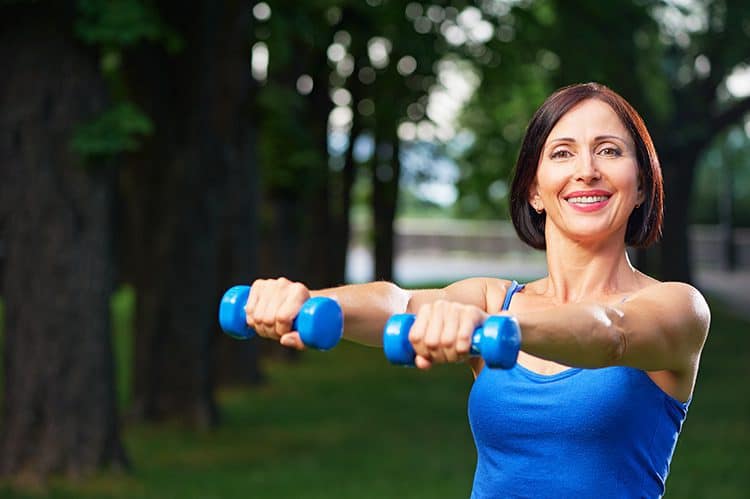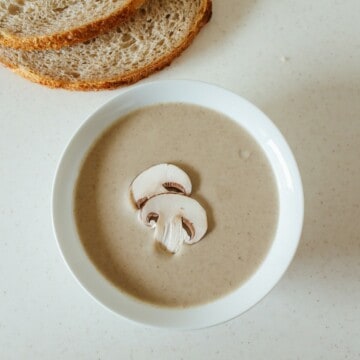The keto diet is popular with athletes and fitness enthusiasts because it’s low carb and high protein, and “good” fats are abundant.
It’s also a diet that’s been around for many years now as a safe and speedy way to lose weight.
In fact, it’s so well regarded that people that embark on the keto diet often continue it for life because it’s easy to follow and extremely effective.
So if you’re about to begin a ketogenic diet, before you rush out and power up your exercise routine with workouts you’ve never done before, it’s worth reading this article because exercising on keto is different.
There are reasons why you might feel tired when starting keto; you might need to exercise slowly until you feel ready for more vigorous workouts, building up your routines to get the best possible results.
Read on to find out eight things you need to know about exercising on ketogenic diets so that you can reap the health benefits and weight loss!
1. At First, Keto Might Make You Feel Lethargic

The keto diet is, without a doubt, fantastic for so many people, but as with most diets, it takes a little adjustment.
Lots of people feel tired and lethargic for a few days at the start, and that’s because your body needs to get used to extremely low carbs and high protein.
If you’re used to eating lots of potatoes, pasta, and rice – your body will wonder where they’ve disappeared to, especially as your body uses those foods as its source of fuel.
The good news is that the tired feeling soon passes, and once your body has made the adjustment, your energy will reappear, and you’ll be ready to roll!
So, go easy on exercise for the first week. Perhaps take some nice, brisk walks or go for a gentle swim and remember, don’t overdo it!
2. Don’t Start a New Exercise

You can try new exercises once your body has made that adjustment, but at the very beginning, it’s best to avoid any new workout regimes.
Let your body feel the benefit of keto for a couple of weeks, then, once you feel ready, by all means - try a new class or different types of exercise.
Additionally, it’s not unusual for your tummy to feel mildly upset when you begin keto, so you don’t want to be in the middle of a spinning class, desperate to go to the toilet!
3. Make Sure You Eat Well

Yes, we know you’re on a diet, but it’s really important that you eat well on the keto diet.
It’s not about calorie counting, and the worry is on a keto diet that some people are in danger of undereating.
That’s because by almost cutting out carbs, you cut out calories.
Additionally (and some people think this is the best aspect of keto), this type of diet stops you from feeling hungry, so you might not eat enough without realizing it!
If you’re exercising, you need to eat to give yourself energy. Otherwise, you won’t perform well.
Always eat breakfast, especially if you work out in the morning. By the same token, if you prefer to work out later in the day – make sure you’ve eaten enough to sustain a good workout.
4. Get Going with Cardio

A really great aspect of keto is that you could burn even more amount of fat than you realize when performing a cardiovascular exercise, and that’s why so many people are successful on this diet.
When your body reaches a state of ketosis (when it burns fat instead of carbs), it doesn’t use glycogen as energy. It uses fat and ketones instead.
So, run, bike, step, dance, swim, or do whatever you love for your source of cardio, and you’ll reap the results.
You'll increase your fat burning and lose more body fat.
5. Eat Fat!

If you’ve always gone on low-fat and low-calorie diets, then keto will feel strange at first, but you need fat for it to work.
Fat is going to be your primary fuel source, and by adding more fat to your ketogenic diet, you'll actually increase your fat-burning potential.
If you don’t consume enough fat, you won’t get the most out of keto, and you’ll feel really hungry.
In fact, if you want to increase your muscle mass by missing out on fat, you’ll end up losing muscle.
Not only will you lose muscle, but you’ll also feel tired and hungry.
Your calories need to come from good fat, such as oily fish, avocado, nuts, and coconut oil (in addition to plenty of protein).
6. You’ll Build-Up

If you do eat protein and good fats and you follow the ketogenic diet properly, you will build up that muscle.
Plus, your body will keep burning fat long after you’ve worked out because keto keeps your body working hard.
It’s a fantastic diet for adding muscle mass and that’s why bodybuilders love the ketogenic diet.
7. Do Listen to Your Body

The ketogenic diet is a superb diet, but it’s not suited to everyone.
You will likely feel tired and lethargic, to begin with, as mentioned in point 1, and you will also probably have a slightly upset stomach, but this should pass within a week to two weeks.
If it continues or if you feel a headache and are unable to concentrate or perform exercises well, keto is just not for you.
Listen to your body and re-think.
If keto isn’t the right diet for you, then there are other diets that could work wonders.
8. HIIT Might Not Be Right Anymore

If you used to use HIIT training to keep your body supple, lean, and strong, it might not work as well as before, and that’s because this type of workout relies on glycogen for short, sharp bursts of energy.
High intensity isn’t always the best option on the ketogenic diet; you need moderate-intensity exercises like jogging, swimming, running, step, or weight training.
So, by all means, try HIIT, but if you start to see that it no longer works, speak to your gym trainer and try something new.
This way, you'll be able to continue your weight loss.





Hi Wilma, I would definitely consult your doctor first before going on a keto diet. If your doctor approves it will be no problem but it's very important to check first!